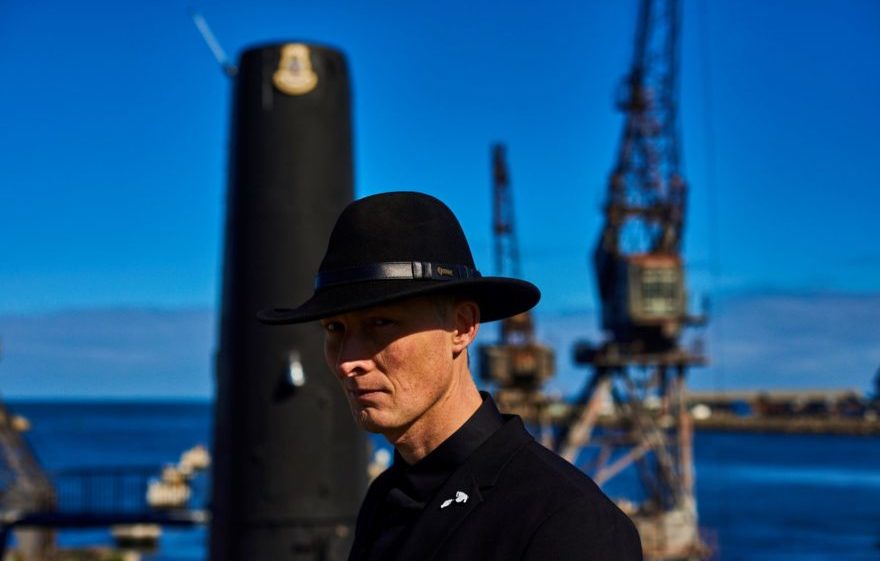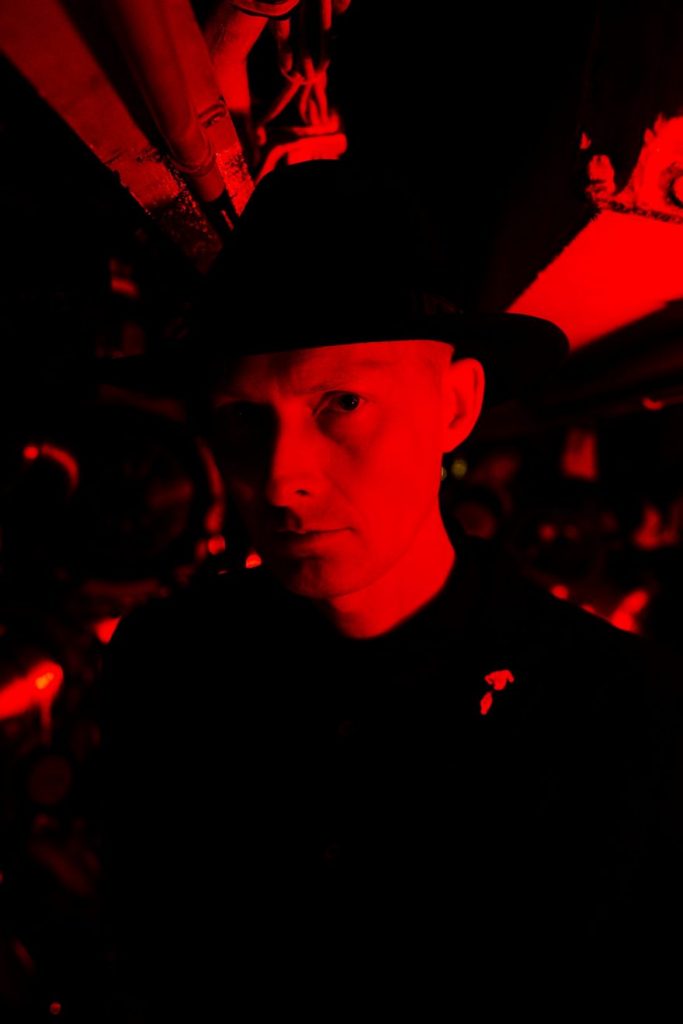Lawrence English is celebrated globally as one of ambient music’s modern masters. The Brisbane-based artist is in Fremantle for the Biennale festival, where he has transformed a submarine at the WA Maritime Museum into a sound installation. Seesaw Magazine caught up with English to find out more about deep listening.
Going deep with sound
4 November 2019
- Reading time • 8 minutesMusic
More like this
- Rewriting tradition with skill and charm
- Close encounter stirs the soul
- The great unknown
Seesaw Magazine: What is the vibe down at Fremantle now that the festival is underway?
Lawrence English: Honestly, I think the Fremantle Biennale is an extraordinary project. To watch thousands of people gather together to experience Waaterlicht was just wonderful. I think what projects like this do is build the capacity of the cities and towns where they take place. They don’t just contribute in quantitative ways though, the real value is in connecting people together and building new ways of knowing place for locals and visitors alike.
SM: The HMAS Ovens Oberon Class submarine retired from active service in 1995 and now rests at the WA Maritime museum. Whose idea was it to turn a submarine into a sound installation!?
LE: Director Tom Müller and curator Ned Beckley were the masterminds behind this location. All of the Biennale team have spent a great deal of time seeking interesting and unique spaces within which these experiences can be realised.

SM: The HMAS Ovens is an authentic Cold War-era submarine and you are referencing this part of its history– how do you do that through sound?
LE: The history of the HMAS Ovens is very much tethered to sound. At the time of its operation, it utilised amongst some of the most advanced audition technologies on the face of the planet. Its hydrophobic arrays could trace a single ship leaving New York from the other side of the Atlantic. To think about this kind of capacity for listening is quite remarkable. The Ovens was heavy utilised for surveillance and espionage operations and it’s these histories that I have researched and considered in making Standing Wave.
For the piece, I used the interior sonic architectures of the submarine as it stands today as the source material for the work. Working exclusively with this material I explored the resonant frequencies of the compartments and used these to create a kind of feedback cycle within the Submarine. The work is an invitation for audiences to navigate the Ovens through their ears, as well as their eyes, it’s about listening in place and time. Moreover it’s an invitation to listen into place and time, to consider what technologies such as those onboard Ovens represent, the geo-political histories that mesh with them and the implications looking forward for how we engage with these issues.
SM: You’ve done over 30 site specific or structural artworks. What is the appeal of turning a specific space – like a submarine – into a listening space?
LE: For me, I draw a distinction between space and place. Space is the static features of an environment, it is the things that ‘remain’. By contrast, place is the living and embed experiences that fill place. Place is not static or fixed, rather it is constantly evolving. It’s about our relation to those moments in that space in time. How attentive or distracted we are impact on the way we understand place. For me place is about a deepening, a willingness to be present in those moments.
For me works such as Standing Wave are an opportunity to interrogate how place is made, what is made available, what is hidden, how do these dynamics create affective potentials for those encountering the work. Listening, and by this I mean the active, agentive process of listening, not the subconscious state of hearing, offers us new ways to know the world. This expanded perspective revels so much, should we be willing to engage with it.

SM: What do you hope people will experience from Standing Wave?
LE: I’m very open to people’s varied experiences. One of the tour guides who had served on submarines gave me some lovely feedback. They said being inside the Submarine with the piece was as close as he could imagine to how it is when the Submarine is on ’silent running’ – the operational, surveillance mode – outside of actual operation. He said the sound created a kind of intensity, both acoustically, but also affectively which reminded him of the sensations when he served. I found this a very powerful commentary.
SM: What first turned you on to the idea that ordinary, environmental sounds could be musical/art?
LE: When I was a child, I’d go bird watching with my dad at this waterfront area of Brisbane that’s now populated with condos. My dad would take us there and we’d look for Reed Warblers on binoculars, which is cruel for children because they can’t control their own eyes, let alone a second set of eyes that’s meant to help them see deeper.
I was constantly looking for this bird, and after several months of not seeing it, my dad told me to put the binoculars down, to close my eyes and listen. He said, “Now that you know where the bird is, put the binoculars back to your eyes and look where you sense the sound is.” I did that and I was able to see the bird straightaway. That was the first time I understood the role of sound as a way of sense-making, as a way of being in the world.
SM: Why should we be curious about what we are listening to?
LE: Our eyes, to some degree, fail us. You can look at a coffee as much as you want, the view will only ever tell you so much. Until you smell it, taste it, you can’t really know it. Listening is a sense we have long relegated as secondary. I think it’s time we address that and make our experience of the world richer for that.
SM: What do you suggest people listen to next to experience more of your work?
LE: Right now I am in the process of working on a new record that completes a trilogy that started with Wilderness Of Mirrors. This work, Cruel Optimism, meditates somewhat on ideas that relate to Standing Wave. Perhaps it’s a good place to start listening.
Standing Wave continues at the WA Maritime Museum until November 24.
Pictured top: Lawrence English stands amidst submarine surveillance equipment. Photo Duncan Wright.
Like what you're reading? Support Seesaw.






